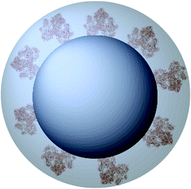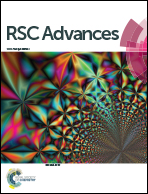Supramolecular enzyme engineering in complex nanometer-thin biomimetic organosilica layers
Abstract
The use of enzymes in industrial processes is often hampered by their limited stability under operational conditions. As enzymes' function and stability are directly correlated to their three-dimensional structure, numerous methods aiming at the preservation of this structure have been developed. While stabilization can be achieved using solid scaffolds for encapsulating the enzyme, it often results in loss of enzymatic activity owing to a lack of conformational mobility of the biocatalyst. With the idea of mimicking protein–protein interactions to create a network of weak force interactions between the surface of an immobilized enzyme and a synthetic protective layer, we have developed a chemical strategy allowing the use of complex mixtures of building blocks mimicking the lateral chain of natural amino acids. After crosslinking a model enzyme at the surface of silica nanoparticles, incubation with eight different organosilane mixtures allowed growing protective organosilica layers of controlled thicknesses. The nanoparticles produced were characterized by scanning electron microscopy and their biocatalytic activity was measured under a series of operational stress conditions. Our results clearly demonstrated that increasing the complexity and biomimetic nature of the protection layer allowed for relevant improvement of the protection effect. Indeed, when compared with the basic formulation, selected complex formulations allowed for an improvement of up to 100% when treated at 50 °C for 60 min or in the presence of a denaturing detergent (SDS).


 Please wait while we load your content...
Please wait while we load your content...